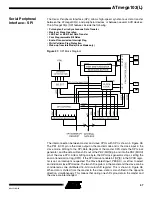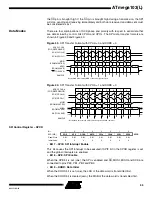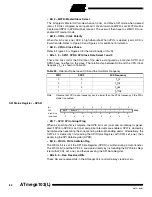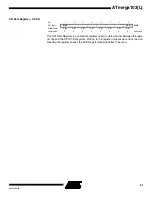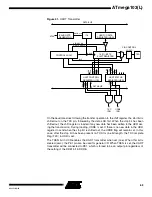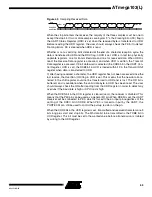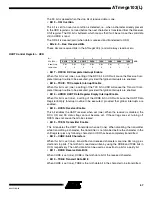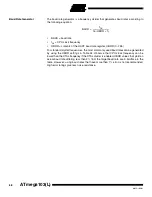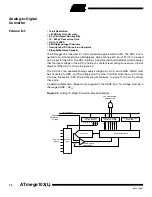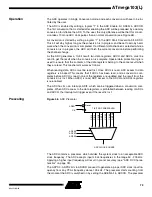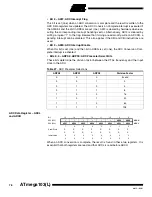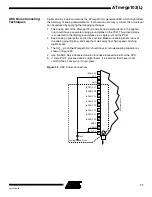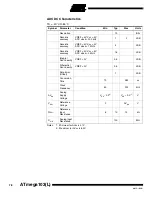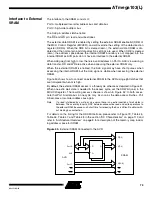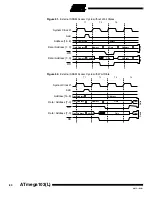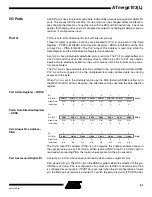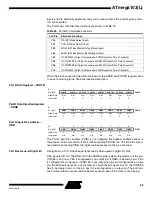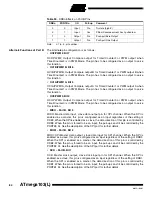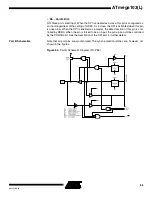
71
ATmega103(L)
0945G–09/01
using the SBI or CBI instruction, ACI will be cleared if it has become set before the
operation.
• Bit 3 – ACIE: Analog Comparator Interrupt Enable
When the ACIE bit is set (one) and the I-bit in the Status Register is set (one), the Ana-
log Comparator interrupt is activated. When cleared (zero), the interrupt is disabled.
• Bit 2 – ACIC: Analog Comparator Input Capture Enable
When set (one), this bit enables the Input Capture function in Timer/Counter1 to be trig-
gered by the analog comparator. The comparator output is, in this case, directly
connected to the Input Capture front-end logic, making the comparator utilize the noise
canceler and edge select features of the Timer/Counter1 Input Capture interrupt. When
cleared (zero), no connection between the analog comparator and the Input Capture
function is given. To make the comparator trigger the Timer/Counter1 Input Capture
interrupt, the TICIE1 bit in the Timer Interrupt Mask Register (TIMSK) must be set (one).
• Bits 1, 0 – ACIS1, ACIS0: Analog Comparator Interrupt Mode Select
These bits determine which comparator events that trigger the Analog Comparator inter-
rupt. The different settings are shown in Table 25.
When changing the ACIS1/ACIS0 bits, the Analog Comparator interrupt must be dis-
abled by clearing its Interrupt Enable bit in the ACSR register. Otherwise, an interrupt
can occur when the bits are changed.
Caution: Using the SBI or CBI instruction on other bits than ACI in this register will write
a one back into ACI if it is read as set, thus clearing the flag.
Table 25.
ACIS1/ACIS0 Settings
ACIS1
ACIS0
Interrupt Mode
0
0
Comparator Interrupt on Output Toggle
0
1
Reserved
1
0
Comparator Interrupt on Falling Output Edge
1
1
Comparator Interrupt on Rising Output Edge

